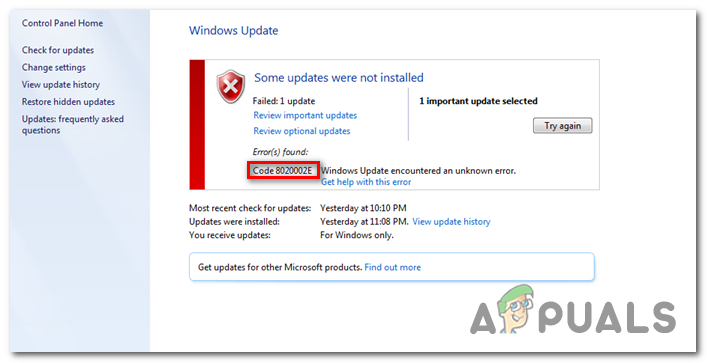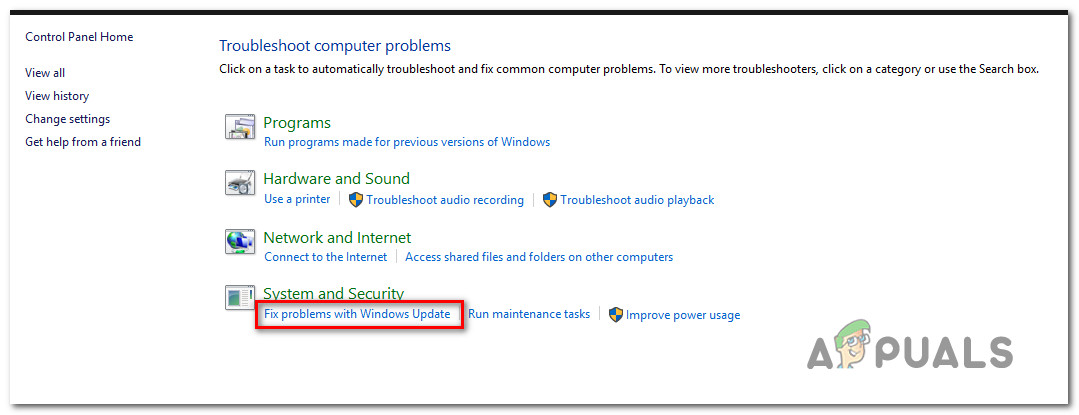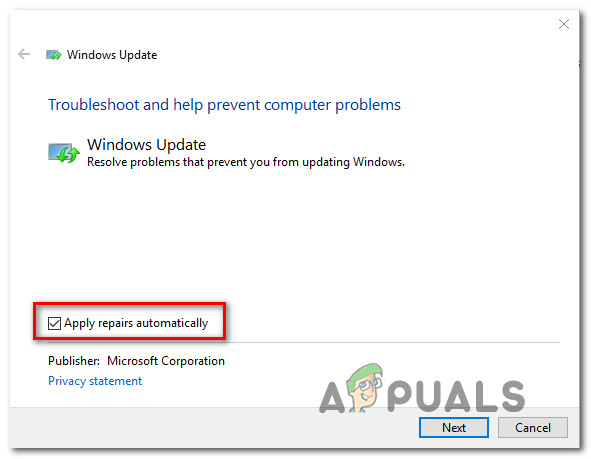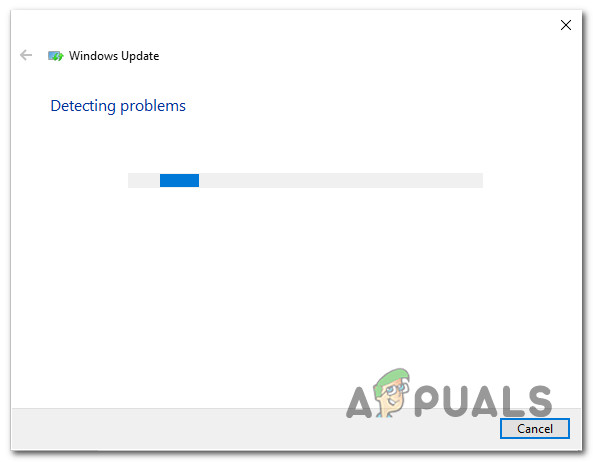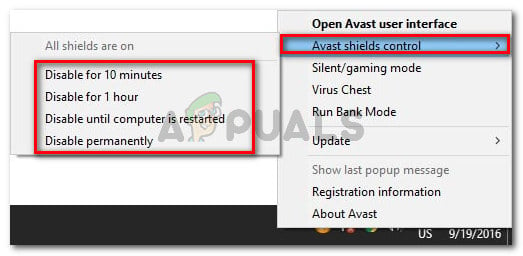What’s causing the Windows Update Error Code 8020002E?
Method 1: Running the Windows Update troubleshooter
Before we pursue other repair strategies that are capable of fixing this error code, let’s see if your Windows version is not capable of fixing the issue automatically. Every recent Windows version (Windows 7, Windows 8.1 and Windows 10) is equipped with a WU (Windows Update) troubleshooter that will automatically scan various Windows components for inconsistencies and automatically apply the appropriate repair strategy. If the problem that’s actually causing the 8020002E error code is already covered by a repair strategy, the instructions below should allow you to fix the problem automatically. Here’s a quick guide on running the Windows Update troubleshooter on Windows 7, Windows 8.1 and Windows 10:
Method 2: Disabling 3rd party interference (if applicable)
As it turns out, this issue can also occur due to an overprotective AV suite that is somehow interfering with the Windows Update component. Whenever this occurs, communications with the Microsoft server are interrupted, which will cause some updates to fail. According to affected users, there are several 3rd party suites that are known to cause this problem (Avast, McAfee, Sophos, and Comodo). If you’re using a 3rd party scanner that you suspect might be responsible for the updating issue, you should be able to resolve the issue either by disabling the real-time protection of your AV site or by uninstalling the 3rd party suite altogether. First, start by disabling real-time protection and see if the issue is still occurring. Keep in mind that this procedure will be different depending on the security client that you’re using. But in most cases, you will be able to do so directly from the taskbar icon. To do this, simply right-click on your security suite’s taskbar icon and look for the option that disables the real-time protection. Once you manage to disable the real-time protection, attempt to install the Windows update again and see if you are able to do so without encountering the 8020002E error code. If the same problem is still occurring, you should proceed by uninstalling the AV completely and remove any remnant files that are capable of enforcing the same security rules. In case you decide to go through with this, follow the steps outlined in this article (here) to uninstall the security program without leaving behind any leftover files that might still cause this behaviour.
Method 3: Resetting every WU component & dependency
If none of the methods above have allowed you to fix the issue so far, its probably due to some kind of WU glitch that has effectively stopped your PC’s ability to install new updates. If this scenario is applicable, you should be able to resolve the issue by resetting every relevant component and dependency involved in the updating process. As some affected users have confirmed, you should be able to fix the issue by resetting every Windows Update component manually from an elevated CMD prompt. Here’s a quick guide with what you need to do:
Method 4: Running SFC and DISM scans
Another potential culprit that might be causing the Windows Update 8020002E error is some type of system file corruption. We managed to confirm this occurrence on Windows 7 and Windows 8.1. In all cases, affected users have pointed out that corrupted data ultimately ended up to breaking the WU component entirely. In this case, you should be able to resolve the issue by running a couple of built-in utilities (Deployment Image Servicing and Management and System File Checker) that are designed to deal with those instances where the system file corruption ends up breaking important components. Keep in mind that while SFC is a lot more efficient at repairing logical errors, DISM is much better at fixing dependencies that might affect the updating operation. Because of this, is highly recommended that you run both utilities in order to maximize your chances of getting the WU component back to a functioning state. Here’s a quick guide that will show you how to run both the SFC and DISM scan from an elevated Command Prompt: If the same 8020002E error code is still occurring, move down to the next method below.
Method 5: Refreshing every Windows component
If none of the methods below has allowed you to resolve the issue, there’s a high chance that the problem you’re dealing with is caused by some kind of system file corruption that cannot be resolved conventionally. In this case, your best chance of fixing the problem without a complete OS reinstall is to refresh every Windows component (including booting data). When it comes to doing this, you have two options to choose from:
Repair Install – This procedure (also known as in-place repair) is the more tedious approach. It requires you to provide an installation media, but the major advantage is that you get to keep all your personal files (including personal media, games, applications and even some user preference) without the need to backup them in advance.Clean install – This is the easiest procedure. You don’t need any installation media and you can initiate it directly from the menu of Windows 10. However, you will lose all your personal data if you don’t back it up before you initiate this procedure.
Fix: Windows Update Error “We Couldn’t Connect to the Update Service”[SOLVED] One of the Update Services is not Running Properly in Windows UpdateLast Free Update For Windows 7 Released, KB4534310 And KB45343140 Are The Final…How to Update the Windows Update Agent to the Latest Version
